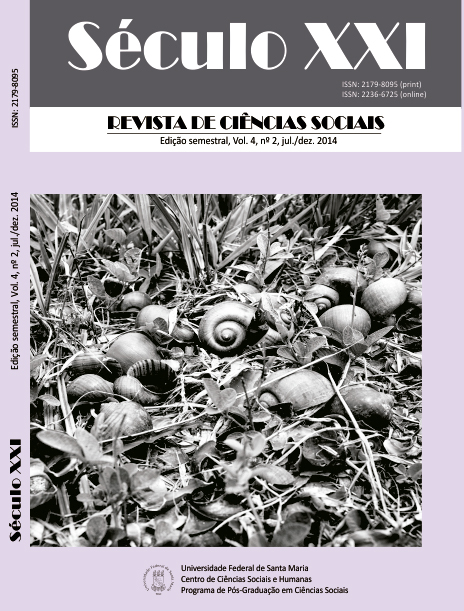The trajectory of the center for research and attention to women and children (1975-1992)
DOI:
https://doi.org/10.5902/2236672517042Keywords:
gender, reproductive health, family planning, human rights, history of medical sciences.Abstract
This article presents the debate about demographic growth and family planning in Brazil through the study of the trajectory of one of the actors who engaged actively in this debate, Dr. Helio Aguinaga, founder and director of CPAIMC (Center for research and attention to women and children), private assistance institution, sponsored by international organizations, which participated in the diffusion of birth control and female sterilization between 1970 and 1990. The analysis of his trajectory since the creation of the institution, in 1974, until his involvement with the CPMI (Parlamentary Comission of Investigation), which investigated the accusation of mass sterilization in Brazil and concluded its investigations in 1993, give us the frame to discuss the following issues: 1) to comprehend how the public representation of CPAIMC as an “instrument of foreigner institutions to control population growth in Brazil” was built. 2) How the accusation of CPAIMC, leaded by politicians, feminist organizations and specialists in the field of health and in population studies, contributed to the promotion of another conception of reproduction politics: the concept of female reproductive rights.Downloads
Downloads
Published
How to Cite
Issue
Section
License
Authors who publish in this journal agree with the following terms:
1. Authors keep the copyrights and allow the journal the right of first publishing, having the paper simultaneously licensed by Creative Commons Attribution License that allows the sharing of the article – copyright recognized - and first publishing in this journal.
2. The journal is allowed to require the copyrights transfer, allowing the article to be used under noncommercial purposes, including the right to send the paper to Free Access or Paid databanks, not assuming the obligation to pass on the value charged from users to the authors.
3. Authors are allowed to take additional contracts separately for nonexclusive distribution of the paper’s version published in this journal (e.g. publishing in institutional repository or as book chapter), recognizing the copyright and first publishing in this journal.







